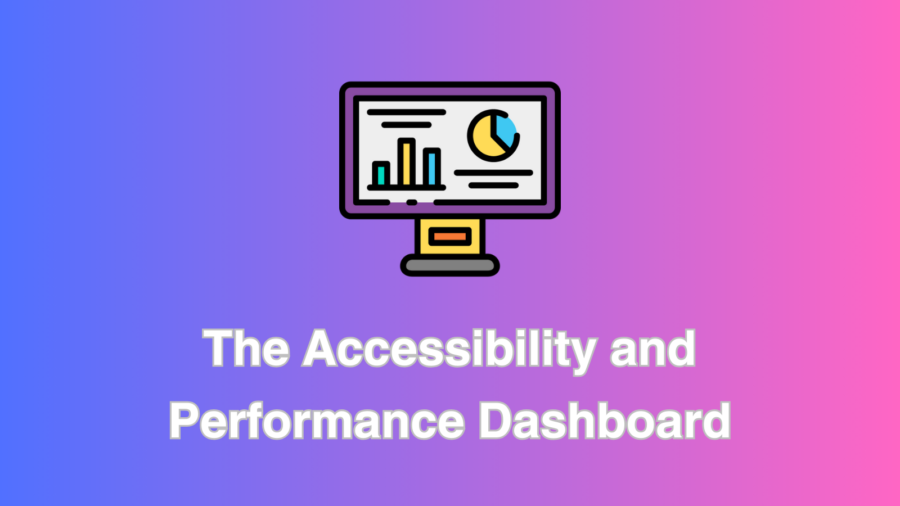Ensuring that your online presence is not only accessible but also performs optimally is paramount. Accessibility and Performance Dashboard, a comprehensive tool that has emerged as a game-changer in web development, offers developers, product managers, and businesses invaluable insights into the user experience. This blog post aims to explore the significance of the Accessibility and Performance Dashboard, delve into the step-by-step process of creating one, and shed light on how product managers can leverage its insights for better decision-making.
Understanding the Significance: Accessibility and Performance Dashboard
Accessibility and Performance Dashboard is more than just a tool; it’s a philosophy that advocates for inclusivity and seamless user experiences. Accessibility ensures disabled individuals can navigate, understand, and interact effectively with a website or application. On the other hand, performance focuses on optimizing speed, responsiveness, and overall user satisfaction. By combining these elements into a single dashboard, developers and product managers can gain a holistic view of the health of their digital products.
Creating an Accessibility and Performance Dashboard: Step-by-Step Guide
- Define Metrics and Goals:
The first step in creating an Accessibility and Performance Dashboard is to define the metrics and goals that matter most to your users and your business. Accessibility metrics may include compliance with web content accessibility guidelines (WCAG), while performance metrics could involve page load times, server response times, and overall site speed. - Choose the Right Tools:
Selecting the right tools is crucial for accurate data collection. For accessibility, tools like Axe, Lighthouse, or WAVE can be integrated into your development workflow. Performance tools such as Google PageSpeed Insights, WebPageTest, or Lighthouse can provide actionable insights into your website’s speed and performance. - Integrate Tools into Your Workflow:
Integrate the tools into your development workflow to ensure continuous monitoring and immediate feedback. Automation is key to catching issues early in development, allowing for timely resolution. - Implement Regular Audits:
Regular audits are essential to track the progress of your accessibility and performance goals. Set up automated audits to run at predefined intervals and alert your team whenever there’s a deviation from the set standards. - Visualize Data with a Dashboard:
Now comes the heart of the process – creating a dashboard visualizing the collected data. Tools like Grafana, Datadog, or custom solutions using technologies like React or Angular can help build a user-friendly and insightful dashboard. - Combine Accessibility and Performance Metrics:
To provide a comprehensive overview, merge accessibility and performance metrics on a single dashboard. This unified view gives a holistic understanding of how changes in one area may impact another.
Leveraging Insights for Informed Decisions: A Guide for Product Managers
Product managers play a pivotal role in ensuring that digital products not only meet business goals but also cater to the diverse needs of users. Accessibility and Performance Dashboard provides product managers with actionable insights to make informed decisions that align with user expectations and business objectives.
- Prioritize User Experience:
By regularly reviewing accessibility metrics, product managers can identify areas of improvement to enhance the overall user experience. This proactive approach ensures that products remain inclusive and user-friendly. - Optimize Performance for Retention:
High-performing websites and applications contribute significantly to user satisfaction and retention. Product managers can use performance metrics to identify bottlenecks and prioritize optimizations impacting user engagement. - Align Development Efforts with Business Goals:
Accessibility and Performance Dashboard assists product managers in aligning development efforts with overarching business goals. By correlating performance and accessibility data with user behavior metrics, they can make data-driven decisions that drive business success.
Real-World Examples: Turning Data into Action
Let’s explore a real-world example of how an e-commerce platform utilized an Accessibility and Performance Dashboard to enhance its user experience. The platform identified that many of its users faced difficulties navigating product pages due to accessibility issues.
By leveraging insights from the dashboard, the development team addressed these issues, leading to a notable improvement in user satisfaction. Additionally, the performance metrics revealed that faster page load times positively correlated with increased conversion rates, prompting the product managers to prioritize ongoing performance optimizations.
In another instance, a news website used the Accessibility and Performance Dashboard to identify slow-loading articles and pages with poor accessibility. This led to a strategic overhaul of their content delivery network (CDN) and the implementation of accessibility best practices. The result was not only improved website performance but also an increase in readership among users with disabilities.
Future-Proofing Digital Experiences
Accessibility and Performance Dashboard is not just a tool; it’s a commitment to delivering digital experiences that are inclusive, performant, and aligned with user expectations. By following a structured approach to creating and utilizing this dashboard, developers and product managers can stay ahead of the curve, proactively addressing issues and optimizing their digital products for success.
In the ever-evolving digital landscape, where user satisfaction is the ultimate metric of success, embracing the Accessibility and Performance Dashboard is a strategic move towards future-proofing your digital experiences. As technology advances and user expectations continue to rise, the insights derived from this dashboard will remain a beacon guiding developers and product managers toward creating a digital world that is accessible and performs seamlessly for all.





